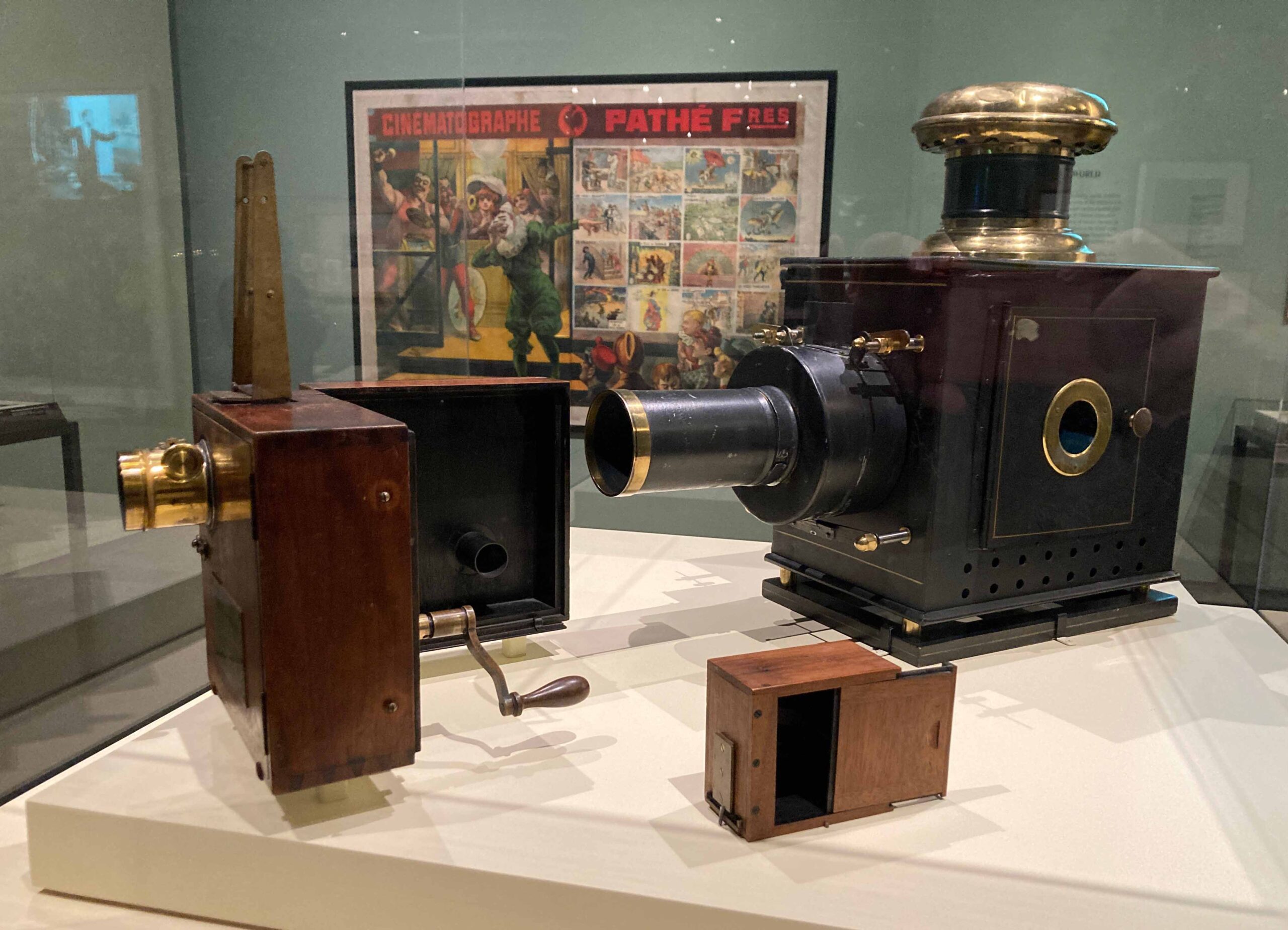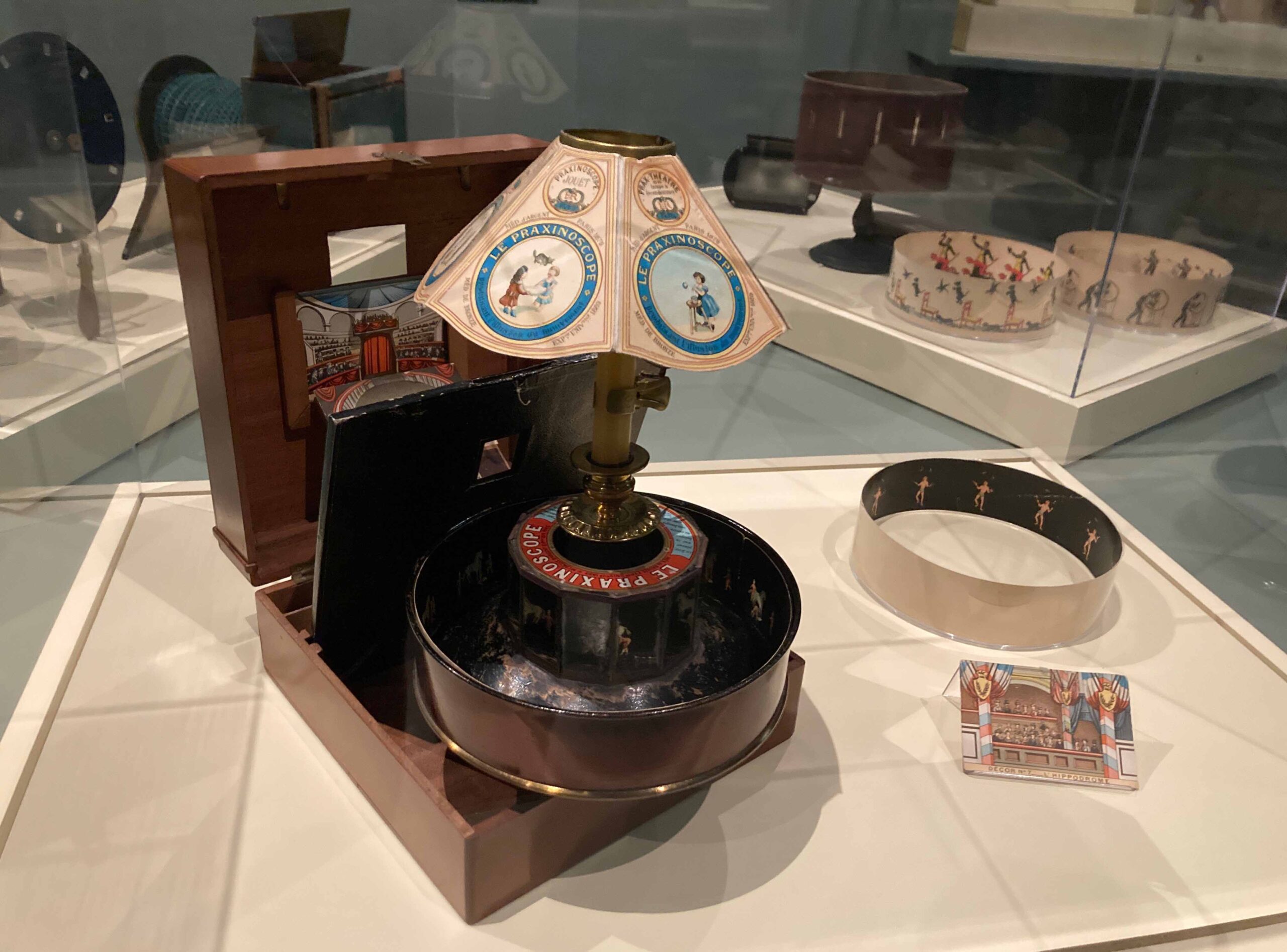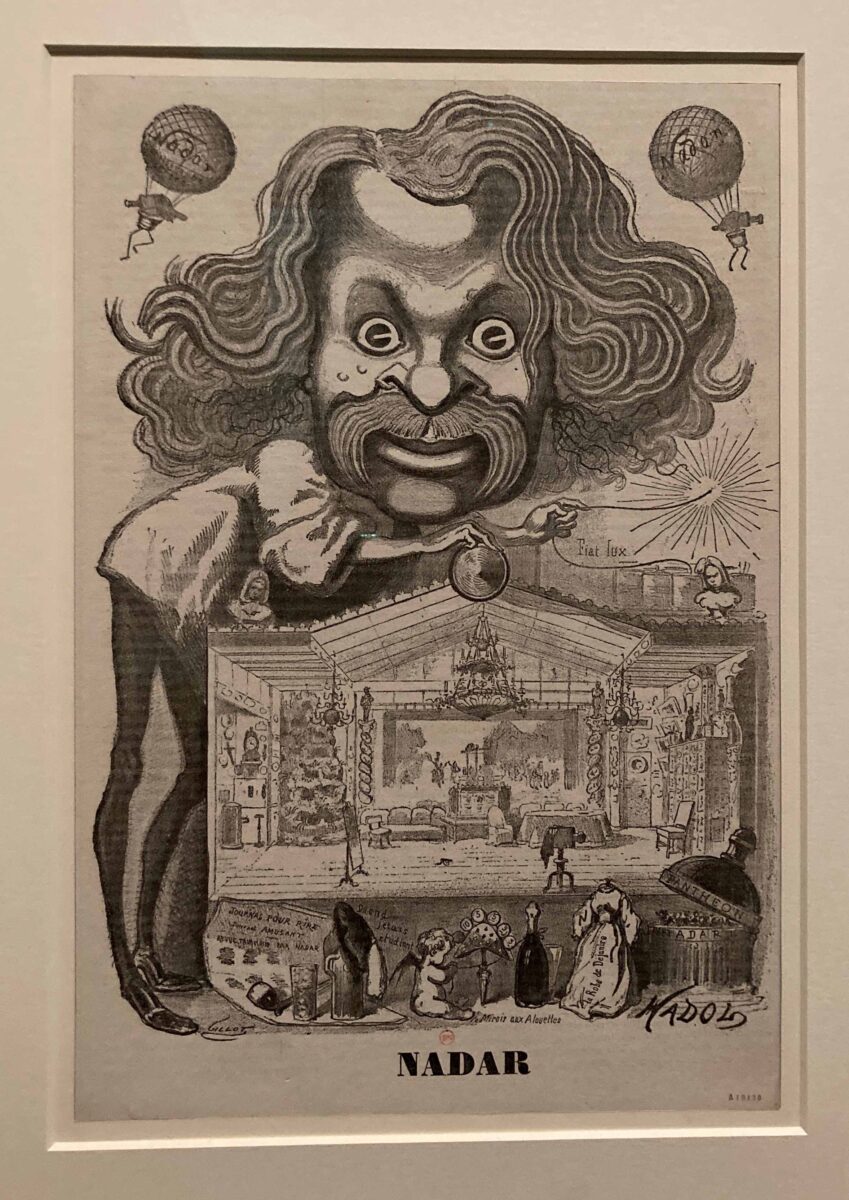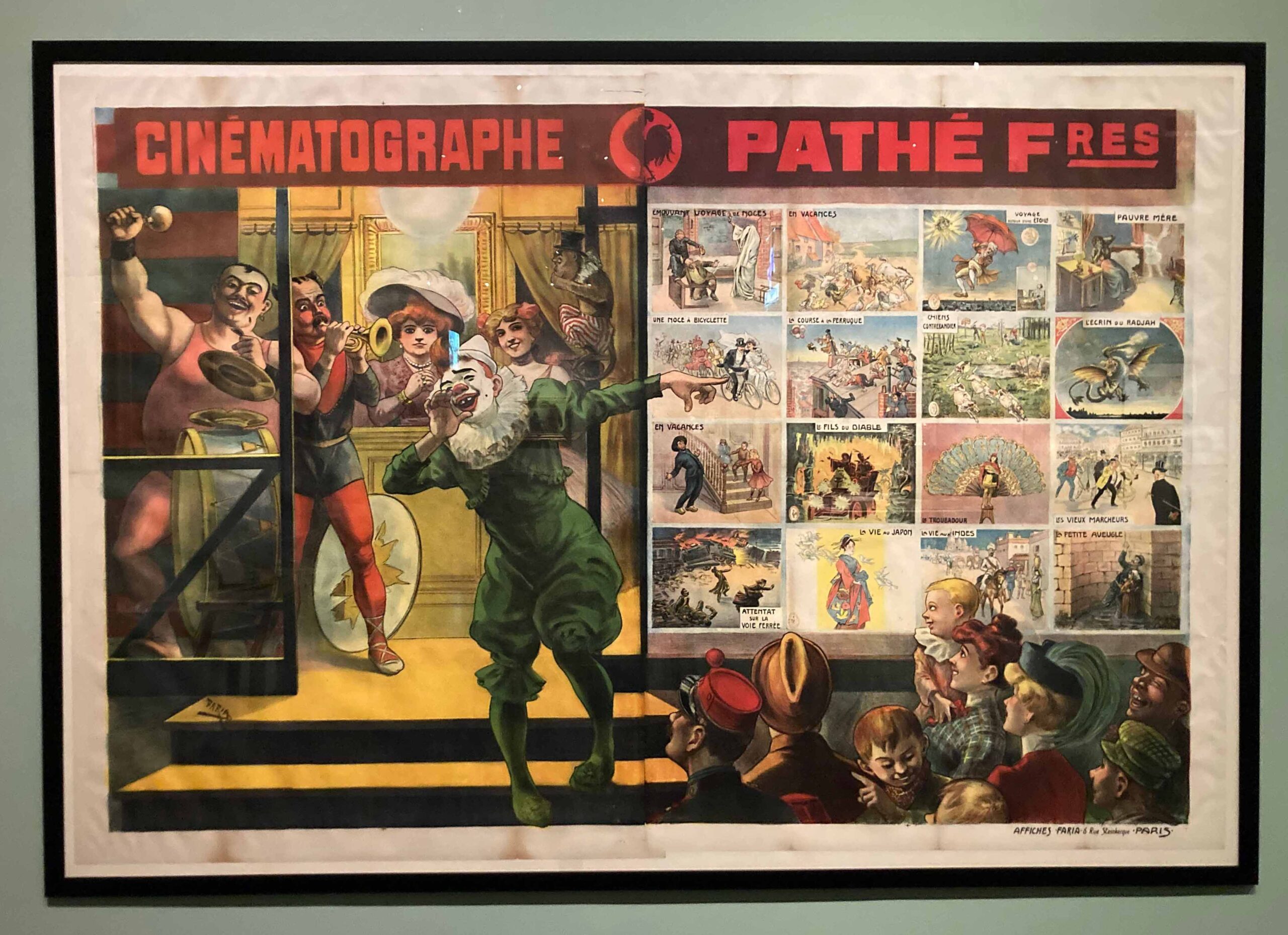A new exhibit at LACMA’s Resnick Pavilion, City of Cinema: Paris 1850-1907, opened February 20 and will run until July 10.
It places the birth of this new art form in the capital city of France that already had a thriving culture of public performances such as opera and theater, magicians, acrobats and clowns.

As a life-long cinephile, it was a delight for me to explore period artifacts, such as magic lanterns and dioramas, that I already enjoyed and photographed at the new Academy Museum of Motion Pictures. Read my article here.

I also saw a cute praxinoscope, an animation device that I was not familiar with. These early systems to project images evolved into the cinematograph, the word used for the first movie cameras, one produced by the Lumière Brothers in 1895, and a similar camera, from the same 1892 patent by Léon Bouly, modified by the Pathé Brothers in 1907.
I already knew that operators equipped with the Lumière cameras were dispatched all over the world to take one-minute long newsreels, displaying the clothing and lifestyle of different cultures, because I had seen Lumière! The Invention of Cinema, an amazing presentation of hundreds of these films in 2016 at the 30th anniversary of Il Cinema Ritrovato, in Bologna, Italy. Read my article here.
At LACMA I was able to see other short films taken in foreign locals with the Pathé cameras. Look at the poster title, loosely translated from the French, “See the whole world go by.”
I watched The Last Supper (1898) by Alice Guy, the first woman filmmaker, that I had discovered during a 2020 virtual presentation at the sadly defunct Annenberg Space for Photography. Read my article here.
I realized a connection that should have been clear to me, since I rented my first photography studio in Hollywood in 1977, before building my own behind my house in 1987. Artists and photographers need large work spaces with controlled lighting for their visual creations, just like filmmakers do. George Méliès, a magician, transitioned to imaginative movie making in his Paris studio, creating masterpieces such as A Trip to the Moon (1902). You may watch the 2011 movie by Martin Scorsese, Hugo, for a wonderful tale about the elderly Méliès in 1930s Paris.

See above a drawing of one of my favorite photographers, Nadar, showing his 19th century studio in Paris.


